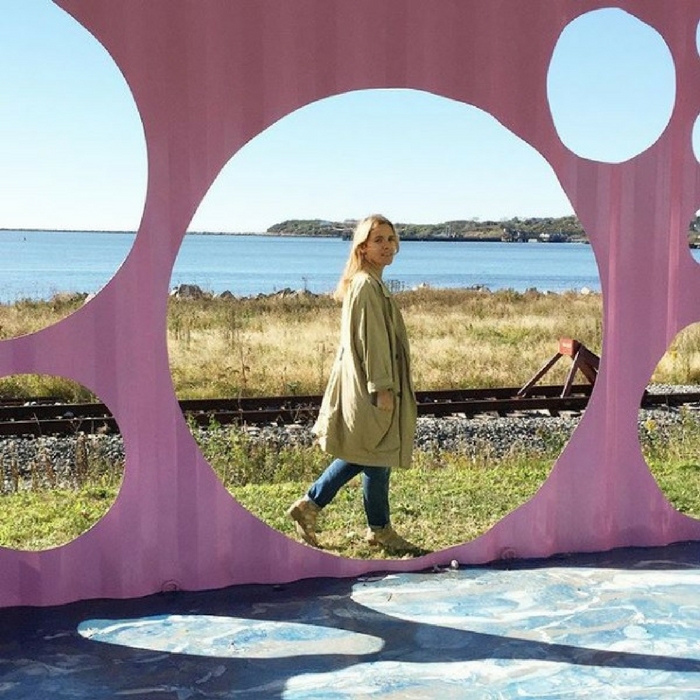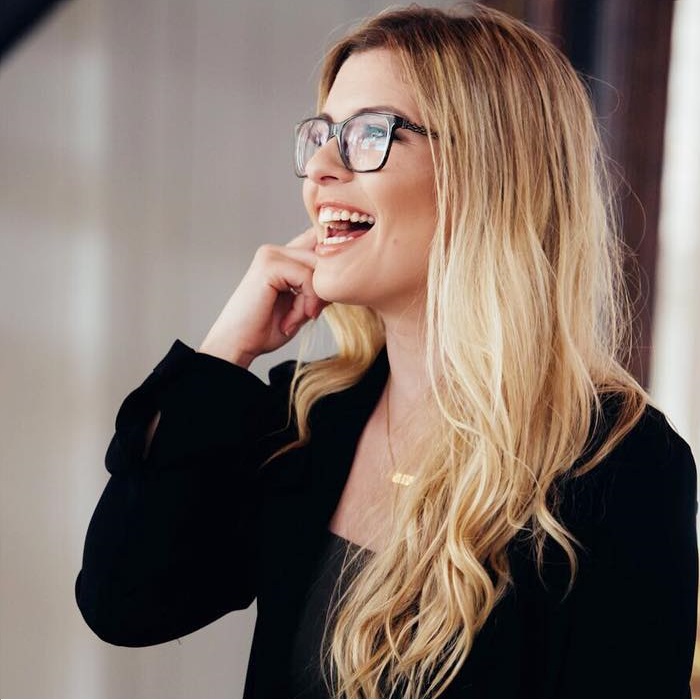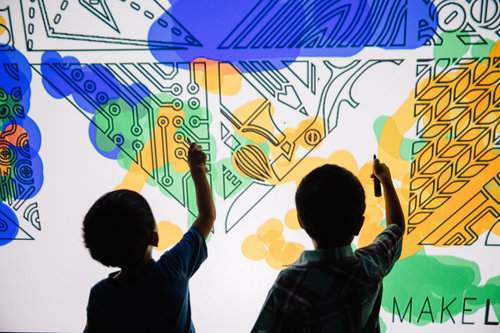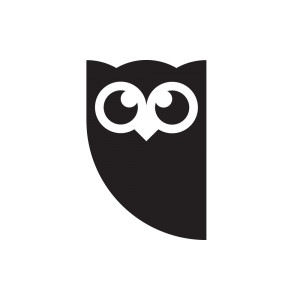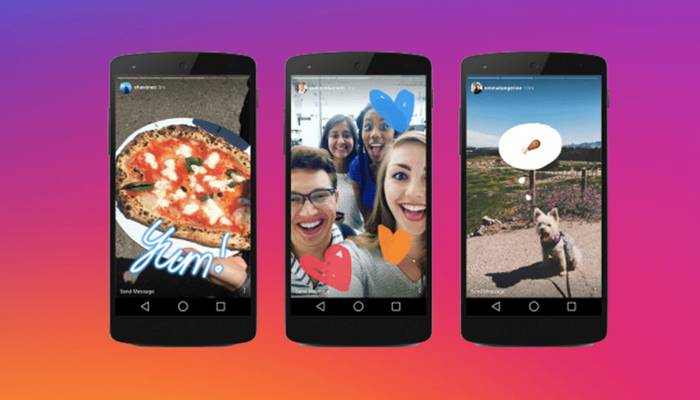Last month, some of us at ruckus digital toured the MakeLab studio – a space tucked away in the downtown core pumping out larger-than-life event activations. Founder and creative director, Jonathan Moneta and lead events producer, Alyssa Janzen share their thoughts on digital technology and working with brands to create memorable brand experiences.
Founder + Creative Director
Jonathan Moneta is the Creative Director at MakeLab — a studio of designers, technologists, and logistics freaks who invent hands-on pop-up-style interactives for events. Three years ago, they took eight 3D printers to a Toronto bar and taught design ‘till last call. Since then they’ve taken their laser cutters, light tables, giant colouring books, and edible photo booths out of the lab, and into public events, brand activations, and parties of all kinds. MakeLab’s interactives leverage new technologies to spark wonder and creativity — and better social media engagement — in unexpected places.
What is MakeLab?
“Our studio explores technology + play. We take new technologies — like 3D printers, laser cutters, and other creative tools — out of the lab, and transform them into accessible experiences that let people meaningfully interact with them for the first time. We host in-studio workshops and produce live experiences at events around the world. Many of the interactives we’ve created ourselves, while others are tools that we have customized to create hands-on experiences at events, conferences, and festivals.
We’re a close knit team hailing from design, technology, and theatre. Our studio began with us taking 3D printers to bars and restaurants, showing people how to design in 3D for the first time. We thoroughly test each event offering, ensuring they’re designed for fun, and to stir creativity in unexpected ways. We work with brands, agencies, and event planners for public and private engagements.”
How did MakeLab get started? How and what did you see in the market that led to creating MakeLab?
“We started taking 3D printers to to bars and cafes three years ago and taught drop-in design classes till last call. Shortly after we began doing it, the Royal Ontario Museum invited us to create a Mesopotamian city-building 3D printing experience at their 19+ Friday Night Live series. This was the first big test of our hypothesis — that new technologies could be made accessible, would have mass appeal with demographics that would otherwise have little opportunities to engage with them, and that bringing real individual creativity to interactives would drive engagement. Even we were delighted by the results. We quickly became experts in teaching uninitiated, non-technical (and often somewhat intoxicated) people how to quickly design. And after several nights of packed events with our printers going at full speed, and hundreds of guests going from unaware of the technology to holding a 3D printed object they designed (and taking a million selfies with it), we knew we could build on this. We’ve taken the same approach to all our interactives, continually bringing in new tech and adapting it to events.”
What makes for a strong digital experience/activation? What elements should brands consider when planning an event they want a strong digital/online presence for?
“Giving people something that they can be proud to post about. We too often see brands begging for posts by incentivising sharing of a logo or hashtag with a contest or swag. When we design an interactive, we’re not thinking about reducing barriers to sharing, we’re thinking about how to help people create something they’re excited to share. We focus on creating something people haven’t seen or done before. It’s why we’re often using tools like laser cutters and 3D printers; they’re magical to watch and empowering to create with. We saw clients use more traditional photo booths with limited engagement/sharing. The idea behind our edible selfie photo booth was to take that interaction a step further. Laser-caramelizing photos onto macarons and cookies in front of people’s eyes is an authentic and new experience, and it’s shared with gusto.”
Where do you see the business/field going? Any trends you’re noticing in terms of the type of digital experience brands want to create?
“We’re seeing a lot of brands shift away from digital to more physical experiential. There are a lot of screen-based interactions in people’s day, and we’re increasingly being asked for interactives that involve physical, hands-on elements. Our Analog Instagram Light Table is one way we’ve begun catering to the call. Another is our giant 10-foot digital graffiti colouring book wall, where people grab electronic spray paint cans and create murals.”
If budget wasn’t an issue, what type of activation/experience would you most want to create?
“Oooo this is a fun question. We love interactives where people can walk away with something that continues to have value/presence in their lives. We also like really big installations that make a visual impact at events. We’re working on some new activations now that we can’t talk about quite yet, that combine big digital design, and physical paint and canvas.”
What’s next for MakeLab?
“We’re working with retailers on in-store interactives where people get to customize products on-site. The tools we use allow us to do much more than simple engraving, such as letting customers etch their signature or handwritten dedication onto perfume bottles and beauty products. We’re starting to book the 2017 holiday season with it. We’re also about to launch a new line of food + catering interactives made with lasers. Our Edible Selfie Photo Booth — where people get their faces laser-caramelized into a french macaron — has been killing it at parties, and we’ve got lots of new foods coming down the prototyping pipeline.”
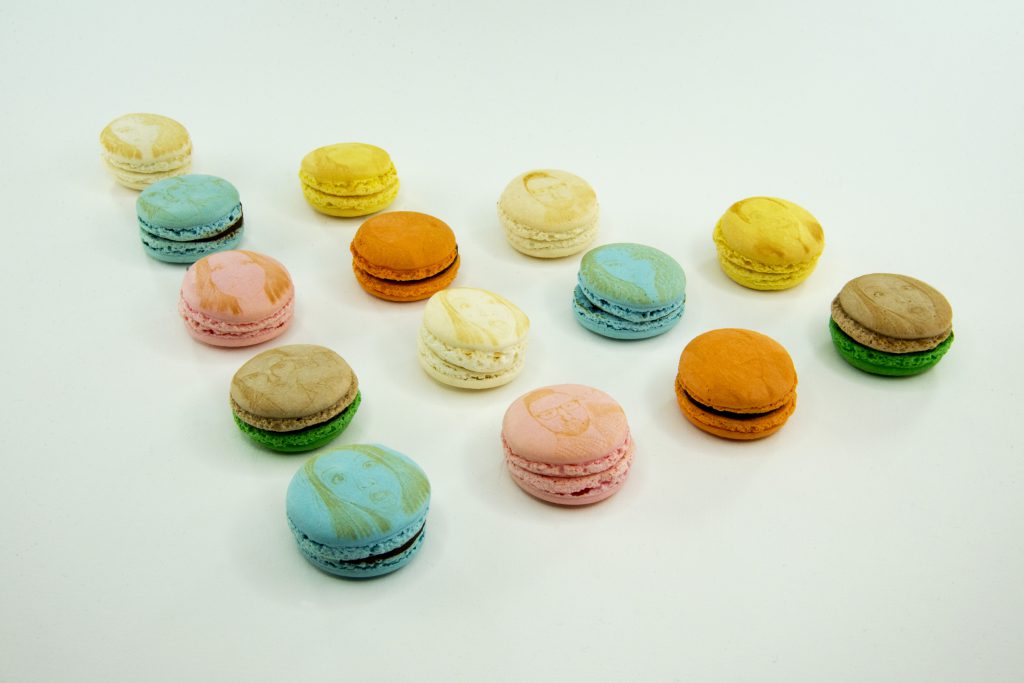
These questions were compiled by ruckus digital digital content strategist, Vivian Kwong. Need digital help? Drop us a line.

